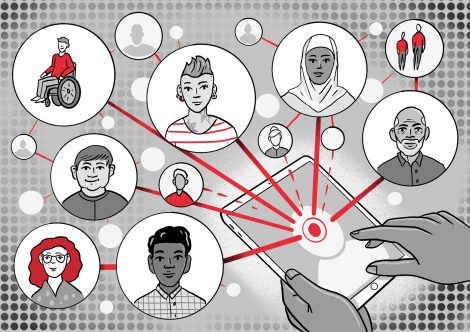HR-Tech promotes (no) diversity and inclusion in organisations

Using HR-Tech can have a strong impact on employees. Does digitalisation in HR lead to more discrimination or can HR-Tech perhaps even help to promote diversity and inclusion in companies?
We are in a new era where new HR-Tech solutions are emerging almost daily. In addition to digitisation in HR, diversity and inclusion is also on the agenda of many HR departments. It is clear that digitisation and the many new solutions on the market are already having a strong impact on the diversity and inclusion efforts of organisations. But how exactly does the introduction of HR-Tech affect the individual employee(s)? Does HR-Tech lead to more discrimination, or can it have the opposite effect and promote diversity and inclusion?
HR-Tech – It starts with a list of requirements
In their meta-study, Stone et al (2015) describe that HR-Tech solutions used in recruiting do not contribute to increasing the diversity of the workforce. On the contrary, the new solutions lead to fewer older people and women applying to the analyzed companies than before. The target groups feel a significantly higher inhibition threshold to submit their application via the recruiting solution. On the other hand, the authors mention as a positive aspect that digital recruiting solutions in connection with social media make it easier to address candidates directly and thus enable HR departments to build up a more diverse talent pool.
Even during the selection and implementation of HR-Tech, HR departments often lack the expertise to deal in depth with the structure and technical functionalities of a solution and to formulate relevant requirements. Is it possible to choose different gender in the HR suite? Is the software programmed in such a way that people with visual impairments can also use it? Often it is the lack of adaptability which, in the course of implementation or application, leads to the fact that digital inclusion of all groups of people in the company cannot be guaranteed.
Digital inclusion as a central theme for the use of HR-Tech
In the application of technology, behavioural and human aspects play a major role in addition to pure functionality. Approaches by various researchers have shown that a technology introduced in a company is more of a social construct than a purely technical unit (Looise, 2011). This means that different individuals may interpret the technology in different ways and that this may have different effects on them. First and foremost, it is the user interface of the technology with which the users come into contact. It is at this point that it becomes clear whether parameters of diversity and inclusion are part of the technology or whether, for example, only one group of people is addressed at a time (Zajc & Istenic Starcic, 2012), (Abascal & Nicolle, 2001).
A great added value that the use of HR-Tech brings with it is the collection and evaluation of data, not only retrospectively but also prospectively. In order to ensure that reports and evaluations reflect reality, a clean and complete data situation is required, otherwise the “garbage in garbage out” principle will apply (Houser, 2019).
There is an increasing number of incidents where algorithms fail to detect and even amplify distortions. In fact, it is often the data that feeds the algorithms that already receive distortions and are thus simply adopted (Kim, 2016). A good data situation in combination with Artificial Intelligence allows, in the reverse direction, for the early detection of distortions in the selection of personnel or in the assessment of employees (Houser, 2019), (Leong, N. 2017).
In order to reap the positive benefits of HR-Tech, HR departments should be aware of the source from which their deployed solution or algorithm draws data, who wrote the code behind it, who reviewed it, and whether the underlying “coding values” match those of the organisation and are, in the best case, geared towards diversity and inclusion. This requires the development of technology and data expertise in HR, which has already been started by many organisations (Bell, Lee & Yeung, 2006, p. 299)
Tech expertise and people focus as success criteria
When selecting and implementing HR-Tech, it is therefore advisable to always think from the individual’s point of view and to involve various groups of people inside and outside the organisation at an early stage. In this way, it quickly becomes clear what level of digitalisation the organization can tolerate and what change and empowerment measures are necessary to ensure the digital inclusion of everyone in the company. Only then will HR be able to withstand the pressure of digitisation and become a thought leader for its own role in the company in the future.
Sources:

